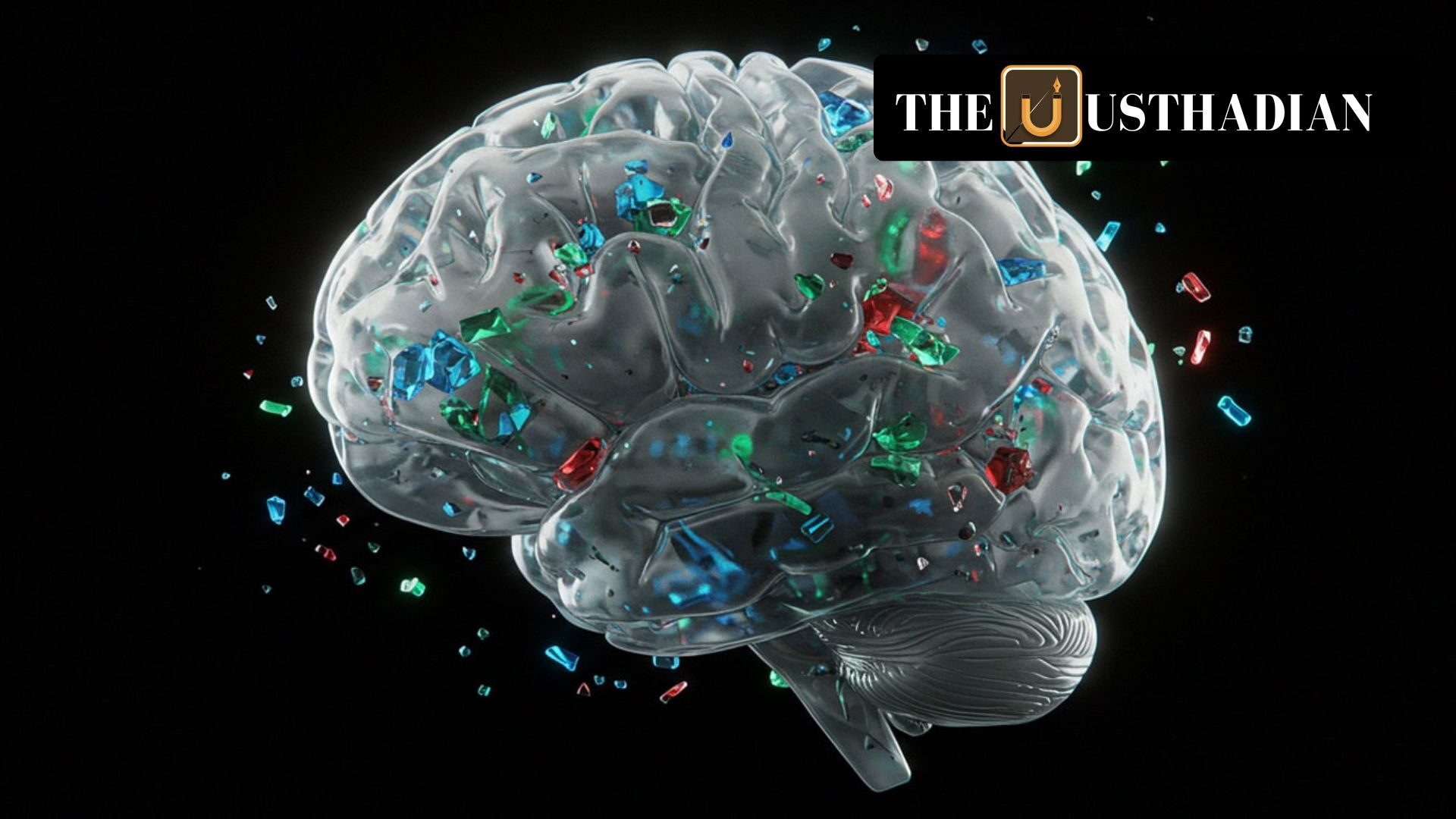Understanding the Invisible Threat
How Microplastics Could Harm the Brain: Shocking Insights from New Research : Tiny particles of plastic, invisible to the naked eye, may be silently harming your brain. A recent study published in Science Advances has brought fresh attention to microplastics and their potential to damage brain function. Conducted on mice, the research suggests these particles may block blood circulation in the brain, resulting in cognitive impairments and even depressive symptoms.
What Exactly Are Microplastics?
Microplastics are plastic particles smaller than 5 millimetres, often formed when larger plastics break down in the environment. They are found almost everywhere—from the ocean floor and agricultural soil to bottled water and the air we breathe. They enter the human body through inhalation, ingestion, and even dermal exposure via cosmetic products. Once inside the body, they can accumulate in tissues and cause long-term harm.
The Study: What Did Researchers Find?
Using real-time imaging techniques, scientists injected fluorescently labeled microplastics into mice and tracked their journey. The particles were found to lodge inside blood vessels in the cerebral cortex, the part of the brain responsible for memory, awareness, and thought. Immune cells tried to remove them but ended up causing obstructions, reducing blood flow.
This blockage led to signs of neurobehavioural distress in the animals, including weight loss, reduced feeding activity, and depressive symptoms. These changes mirror the types of brain function disruption that could be dangerous in humans if proven applicable.
How Do Microplastics Reach the Brain?
Until now, scientists recognized two key routes for microplastics to impact the brain:
- Indirectly, through peripheral organs that signal changes to the brain.
- Directly, by crossing the blood-brain barrier, which is supposed to protect the brain from harmful substances.
However, this study proposes a third alarming pathway—obstruction of cerebral blood vessels, leading to reduced oxygen and nutrient delivery to the brain. This adds a new dimension to the health risk associated with plastic pollution.
Human Health: Should We Be Worried?
While the study focused on mice, it raises red flags for human health. The diameter of human arteries is far larger (approx. 4 mm), meaning microplastics may not clog them as easily. Still, experts warn that long-term exposure, especially from polluted environments or high microplastic diets, could have cumulative effects.
More research is required to understand the exact risk levels for humans. However, with microplastics now being found in blood samples, breast milk, and even placentas, the threat cannot be dismissed.
Static GK Snapshot
How Microplastics Could Harm the Brain: Shocking Insights from New Research :
| Topic | Details |
| What are Microplastics? | Plastic particles < 5 mm, from degraded plastic |
| Study Published In | Science Advances, 2025 |
| Studied On | Mice |
| Observed Effects | Blood vessel blockage, cognitive decline |
| Brain Region Affected | Cerebral cortex |
| Known Entry Routes | Ingestion, inhalation, bloodstream |
| Third Proposed Route | Obstruction of blood vessels |
| Blood-Brain Barrier | Protective layer between blood and brain tissue |
| Potential Human Risk | Still under study, but caution advised |








